These days, the availability of multiple types of scope configurations, focal planes, and features is a testament to how far telescopic sights have come over the years.
To those just getting into rifle scopes, it’s now a quandary to choose between FFP or SFP scopes.
How do you choose the best focal plane for your rifle or for the job?
The shooter must determine what the rifle will be used for 80-90% of the time. The intended application can help determine specific shooter needs that includes whether the benefits of FFP or SFP scopes are right for common approaches such as hunting, long range, or the AR-15.
More approaches to consider include combat, the LPVO, target shooting, and competition use. But before we get ahead of ourselves, what is FFP and SFP?
Let’s find out.
What is the Difference Between FFP and SFP Scopes?
Overall, the difference between FFP and SFP scopes is how the reticle performs in relation to magnification. FFP reticles will grow or decrease in size while SFP reticles will remain the same regardless of power changes. This is a direct result of where the reticle is placed in the scope.
Since both first and second focal plane rifle scopes look the same on the outside, you can’t tell them apart from appearance alone. Here is a rundown on FFP and SFP scopes to understand what they are, how they work, and their advantages.
What does FFP Mean on a Rifle Scope?
FFP means First Focal Plane but is also known as Front Focal Plane. What is FFP? It is the position of the reticle. It lies in front of the magnifying lens within the scope erector tube. The reticle increases in size as magnification increases and decreases in size as magnification decreases.
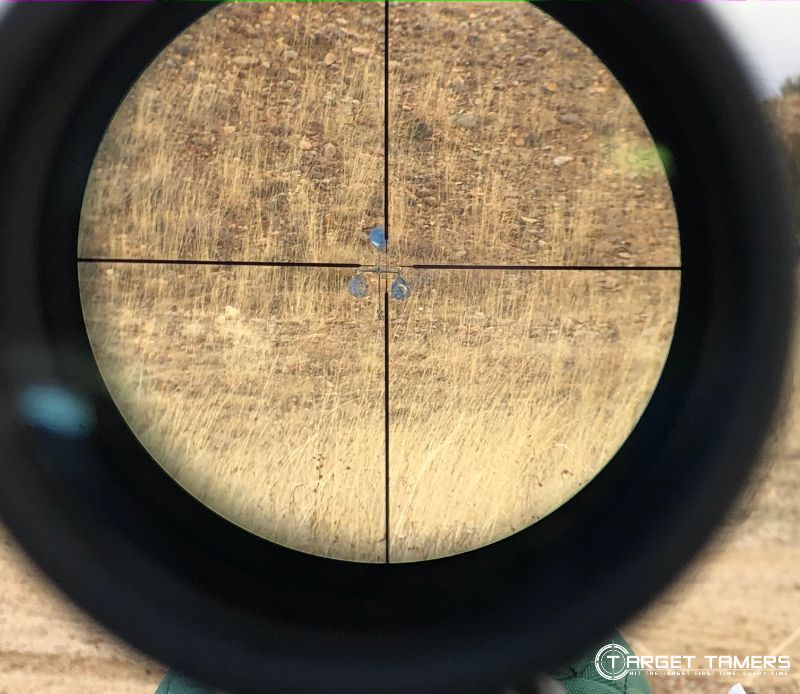
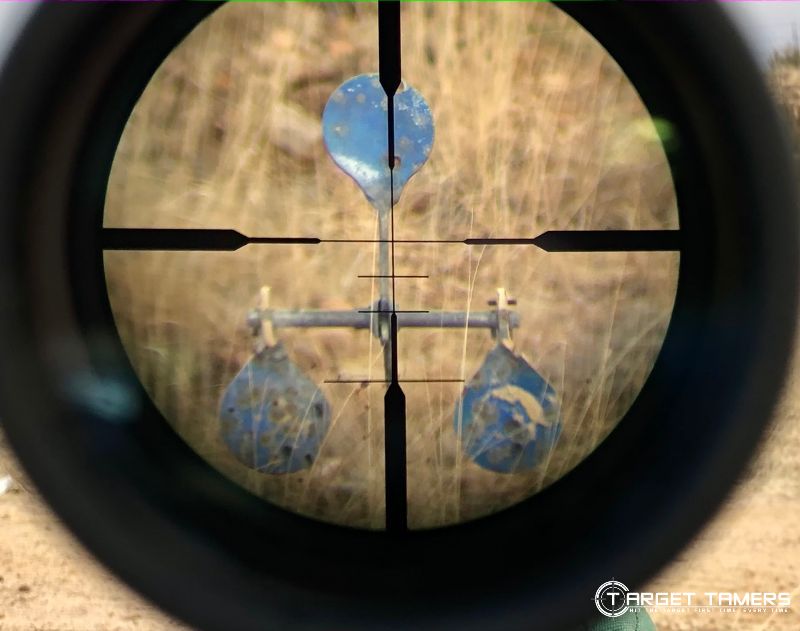
First Focal Plane Explained
Explaining first focal plane reticles must include discussion of subtension. FFP scopes have constant subtension. The measured amount of space/area the reticle covers up on a target remains the same regardless of magnification.
Subtension is the measurement of how much of a target or area is covered by the reticle at a specific distance. Because the reticle and magnification are in parallel, reticle crosshairs will always take up the same amount of space on a target whether you’re in low power or high.
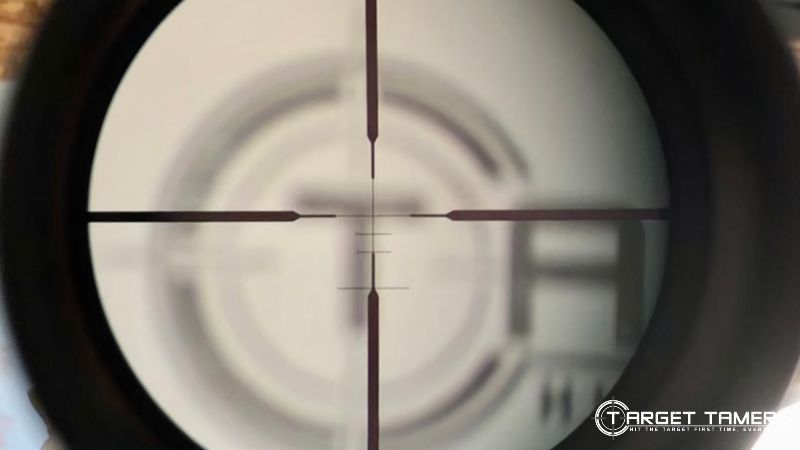
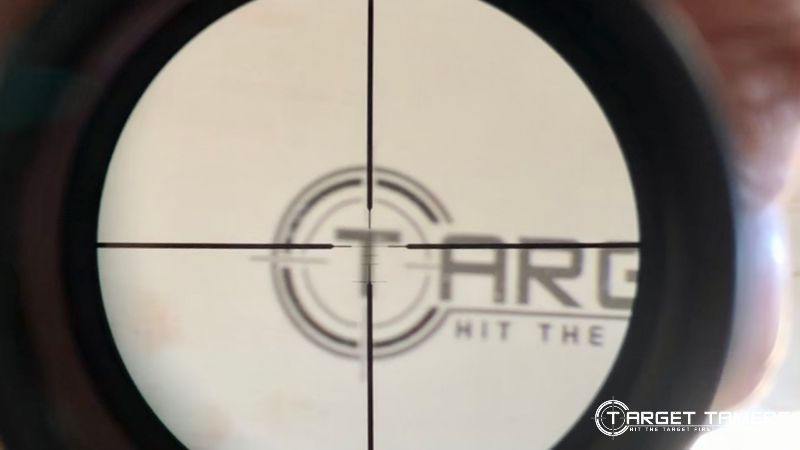

What are the Advantages of a FFP Scope?
The first focal plane position of the reticle provides two primary advantages. First, constant subtension that allows for accurate ballistic holdovers at any magnification setting. Secondly, the magnified reticle at high magnification improves visibility of holdover points.
The best FFP scopes typically have a tactical or competition approach, but as hunters are demanding long range performance, FFP scopes can be used for hunting too.
FFP Pros & Cons
What does SFP Mean on a Rifle Scope?
SFP means Second Focal Plane but is also known as Rear Focal Plane. What is SFP? It is the position of the reticle. It lies behind the magnifying lens but in front of the eyepiece in a rifle scope. The reticle remains the same size (static) throughout the entire magnification range.
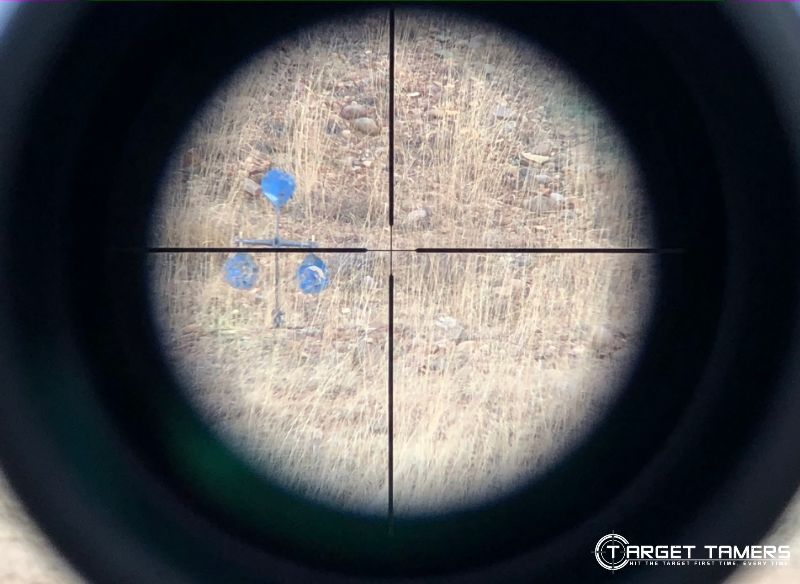
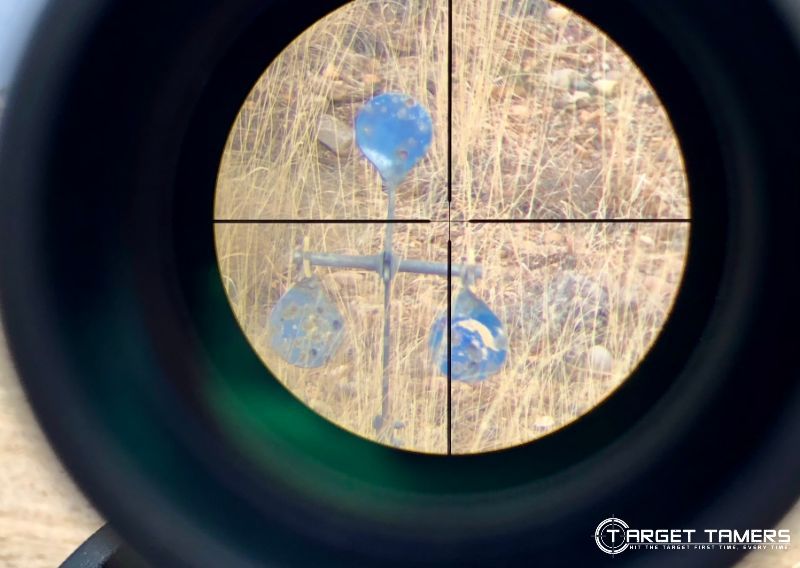
Second Focal Plane Explained
Explaining second focal plane reticles is cause for a discussion on subtension. Subtension is the measured amount of space or area on a target that crosshairs cover up at a specific distance. SFP reticles are important to understand as subtension is constantly changing as magnification changes.
The amount of space that the crosshairs cover up on a target at any distance will change as you increase or decrease magnification. As you increase power, the crosshairs will take up less ‘space’ on the target as the target gets larger in size. As you decrease power, the crosshairs will take up more ‘space’ on the target as the target gets smaller in size.
What are the Advantages of a SFP Scope?
Second focal plane advantages are many. With a reticle that doesn’t change size, it can provide better crosshair visibility for shooting in low magnifications. On the high end, it can improve visibility of small targets at max magnification. SFP scopes are common and more affordable than FFP scopes.
SFP Pros & Cons
FFP VS SFP: How to Choose?
Choosing between a FFP or SFP scope requires more insight than leaving it to personal preference alone. Other considerations such as magnification requirements and how the scope will be used most of the time must be factors that have weight in the final decision.
Hunting
What focal plane is best for hunting? Two factors must be considered: magnification and terrain. FFP scopes are compatible for high power and open country, mountainous terrain like Western big game hunting. SFP scopes can be great for low magnification and timber, brush, or Mid-West deer hunting.
Generally, 3-9x and 4-16x are great configurations for many hunting conditions and game as they can cover plenty of ground. The visibility of a reticle that doesn’t change size at low powers in lowlight conditions gives the SFP scope an edge that FFP cannot provide.
Normal reticle visibility of a SFP is also preferred for those in heavy brush and thick timber environments. With FFP reticles, the crosshairs can get too small and are difficult to see as they appear ‘lost’ against the terrain.
So, is FFP any good for hunting? FFP allows for accurate holdovers at any magnification, and it can be maximized to its full potential if you’re consistently hunting with magnifications of more than 12x. This is great for long-range, open country, and unpredictable, mountainous terrain. Dialing in or messing with magnification to get to the calibrated power to use the right holdover point on a SFP scope is less than ideal.
Ultimately, the last 30 minutes of last legal light is often the golden hour of filling a tag. Clarity, resolution, and brightness is best achieved in the lower powers, and since FFP scopes have a hard time with reticle visibility in low light and low power, the SFP remains the favorite focal plane scope for deer hunters.
Winner: SFP
Long Range
Long range shooting often means high magnification and a lot of dialing in or heavy dependence on the reticle. Whether it’s hunting or competitive shooting, long range performance is best done with a FFP scope.
FFP reticles are clearly the best scopes for long range shooting. The first benefit is that you can maximize use out of a complex reticle. With multiple elevation and windage holdovers that will always be accurate regardless of magnification, it makes for fast and straightforward decisions. This benefit also boosts confidence in reducing POI shifts when you do adjust the power.
Secondly, the reticle becomes larger in size as you crank up power. This makes it easier to see the crosshairs, hashmarks, and/or dots. The catch-22 is that on very small targets, FFP reticle subtension can obscure significant areas making it harder for exacting shots.
Is FFP or SFP better for long range shooting? SFP scopes will work for bench shooters who aren’t on the clock and content shooting from max power. Quality glass and turrets are essential. You’ll always have an easy to see reticle regardless of magnification. However, FFP is better suited to the job.
Winner: FFP
AR15
The AR-15 is a favorite and popular rifle used for everything from target shooting to hunting, law enforcement and competitions. FFP or SFP scopes can be mounted to a MSR to fit your requirements and intended applications.
Choosing between FFP or SFP scopes for an AR15 or any type of MSR comes down to intended applications and the range of magnification you will be using 80-90% of the time.
SFP is suitable for many applications especially when magnification is less than 12x. SFP scopes are very user-friendly on the low power end versus FFP scopes. Having a max of 12x or even pushing it to 14x with SFP is suitable for some long-range performance, and at that point, you can rely on holdover points onboard the reticle.
FFP will really shine for long range shooting, competition, and some hunting styles. Being able to increase the power but not max out and still have accurate holdovers is critical for these applications.
Since you can do a lot of various things with an AR, the type of focal plane scope you opt for should be suited to what you will be doing with it.
Winner: Tie
Combat
The LPVO or a high-powered scope used for combat, tactical, or home defense situations will have a reticle placed either in the first or second focal planes. For most professional scenarios, CQB performance is paramount.
The SFP reticle is constant, easy to see, and well suited to CQB combat. Even when you change magnification within 250 yards, there shouldn’t be any need to hold, at least on a man size target. A lot of law enforcement (LE) combat engagements are extremely close, and LE sniper scenarios may be closer than most people think.
You can opt for either FFP or SFP scopes for tactical use, but with a 50 to 100-yard zero, SFP will serve its purpose for close to mid ranges.
FFP reticles certainly have their place and can be extremely beneficial on magnified optics when holding over or for fast corrections and follow-up shots at a distance. It may come down to the type of combat and distance or speed requirements you anticipate needing.
Do snipers use FFP or SFP? It may depend on who you talk to. It’s been said that veteran snipers preferred the fixed 10x power scope. It may also depend on if it’s military or local police. Oftentimes, the budget is the determining factor versus the preference over reticle focal planes.
Winner: Tie
LPVO (Low Power Variable Optic)
LPVO scopes are close to mid-range optics and are great on tactical carbines. The 1x magnification and red dot capability are must-have features, but the low variable magnification makes it a versatile optic. SFP is appropriate for most scenarios, but FFP can provide distance advantages.
FFP reticles on a LPVO would be best suited to those who know they will be engaging targets at multiple and varied distances. This would be appropriate for competition shooters and military men and women on the front line. The use of a FFP LPVO will also ensure fast and accurate shots using holdovers.
It is worth mentioning that quality LPVO scopes with FFP reticles should be visible and fast to use in the low powers. FFP reticles are more common to find in 1-8x or 1-10x LPVO scopes.
In most circumstances, the SFP remains attractive to the LPVO user and is the most common type of focal plane available in 1-4x and 1-6x scopes. Even if you’re shooting over 300 yards, outside of specialized circumstances, you’ll likely have the time needed to dial in or max out the power for accurate holdovers. With a LPVO for an AR, there’s not much to complain about when it comes to using max power.
Winner: SFP
Target Shooting
There are many forms of target shooting from plinking, rimfire fun, and 100-yard shooting to testing out long-range skills and scope ability. For most purposes other than long range, the SFP reticle is the perfect scope for these scenarios.
A lot of people don’t need FFP scopes and target shooters generally fall into that category. Many target shooters are at the bench or in prone positions and aren’t racing against the clock. They have the time to dial in adjustments and shoot from the center point at their pace and will do fine with a SFP scope.
FFP may be desired for long range target shooting or perhaps for those who want a scope for aging eyes that allows them to see a larger reticle. More magnification doesn’t make you a better shooter, but it does allow you to see better.
The same can be said if you’re considering FFP or SFP for 22LR rimfires. Take into consideration what you’re using it for 80% of the time, the targets you’re shooting, and the distances. FFP would be great for target shooting practice for PRS matches but can obscure F-class smallbore targets. For most recreational purposes without holds, SFP does it.
Winner: SFP
3-Gun/Competition
Speed and accuracy are just two factors that are must-have features from a rifle scope for 3-Gun and many types of shooting competition matches. FFP is the way to go for varied distances and on-the-clock shots.
Precision marksmen almost always prefer FFP scopes. The ability to use accurate holdovers at any magnification makes for fast shots. You lose time with constantly dialing in on an SFP scope, decreasing magnification for wide FOVs to find the next target and then cranking it up to make a shot, or always being stuck max power.
The top scopes for competition shooting usually have a very wide magnification range allowing for adjustable FOVs for the widely varied target distances. The downside to the FFP is that the reticle can get small at lower power making it harder to see that center dot. Illumination can help to alleviate the problem. Nonetheless, the SFP has an advantage in that it always stays at its normal, visible size and is usually thin enough to see F-class smallbore targets.
Pro Tip: Some shooters in competitions that allow for more than one optic will use an FFP scope and red dot sight combo with a 45-degree offset mount.
Winner: FFP
SFP VS FFP: Which is Best for You?
The right scope will be the one that is best suited to the intended application. If it’s about cost alone, the SFP is cheaper as FFP reticles are nearly always glass-etched and precision alignment is imperative. Beyond the budget, choose the scope that offers the most advantages for the application.
In general, FFP is great for long range, high magnification, competition, and some professional tactical and hunting applications.
SFP is very good for most target shooting, hunting, and CQB performance. If you’re not holding over often, prefer consistent visibility of the reticle, or shoot small targets often, SFP is the way to go.
Keep in mind that experienced shooters find ways to help mitigate some of the problems inherent in each focal plane and work with it. Don’t let complex math, budget, or existing biases get in the way of choosing the right type of scope for you and for the job.
Further Reading
- How to Measure Scope Ring Height (With Pics & Calculations)
- How to Adjust a Rifle Scope: 6 Scope Adjustments Explained!
- How to Level a Scope on a Rifle [Step-by-Step With Pics]
- What is a Rifle Scope Ruler (Mildot Master) & How to Use It?
- How to Lap Scope Rings (& Is Lapping Really Necessary?)







